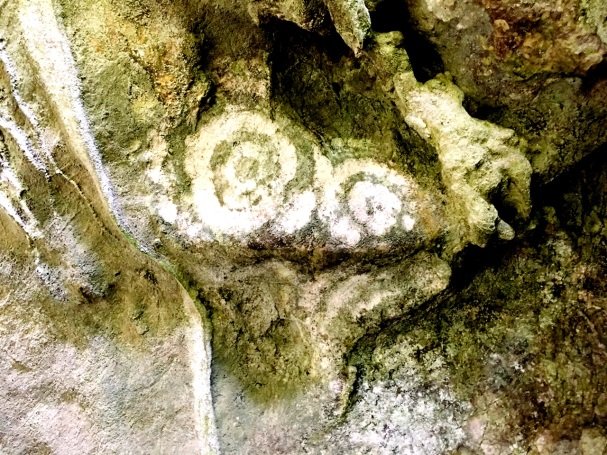 |
|
Ancient drawings found in Tham Chang Cave depict geometric patterns -concentric circles and spirals that are typical of theMetal Age. Photo courtesy of Assoc. Prof. Dr Trình Nang Chung |
The drawings were discovered on the wall of Tham Chang Cave by a survey team of the Việt Nam Institute of Archaeology during an archaeological verification trip.
The cave was discovered by the institute in 2015, said Prof Trình Nang Chung, PhD, head of the survey team, adding that based on stone tools found inside, the cave is believed to have formed during the Iron Age.
“The study of the drawings shows that the prehistoric people who lived in the cave used white pigment that was created from chalk pounded into powder and mixed with vegetable resin or animal fat to draw," he said.
Six drawings depict geometric patterns – concentric circles and spirals – that usually appeared on the ceramics of the time, revealing that the ancient people took shelter in Tham Chang Cave about 3,000 years ago.
This is not the first time that ancient art has been discovered in caves in Nghe An.
In the 1940s, French archaeologists found drawings in a cave in Chau Phong Commune, about 15km south of Quy Chau Town. In addition, human-figured rock carvings were recently detected in a cave in Anh Sơn District’s Hoa Sơn Commune.
The discoveries in caves in Nghe An, along with art artefacts found in the provinces of Hoa Binh, Ha Giang and Quang Binh, indicate cave art was practised by people in Viet Nam in prehistoric times.
Also during the trip, archaeologists discovered a new relic site of Hoa Binh Culture dating nearly 10,000 years ago from the Stone Age, which is Tham Moi Cave in Quy Chau District. Stone working tools found in the cave show fundamental traits of the art of Hoa Binh Culture.
Tham Chang Cave is wide open inward with a tubular structure and few small niches. The total area of the cave is about 800sq.m. The ancient drawings, all of which are geometric patterns, were discovered on the cave walls near its entrance.
Local authorities have devised plans to conserve the relics.
Source: VNS